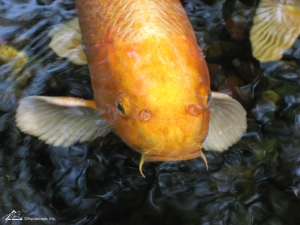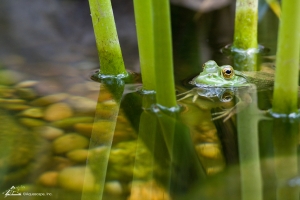[av_heading heading=’Types of Beneficial Bacteria for your Pond’s Water, Plants, and Fish’ tag=’h1′ link_apply=’header_link’ link=’product_cat,358′ link_target=” style=’blockquote modern-quote modern-centered’ size=” subheading_active=” subheading_size=’15’ margin=” margin_sync=’true’ padding=’10’ color=” custom_font=” av-medium-font-size-title=” av-small-font-size-title=” av-mini-font-size-title=” av-medium-font-size=” av-small-font-size=” av-mini-font-size=” av_uid=’av-l31z2cl8′ custom_class=” admin_preview_bg=”][/av_heading]
[av_hr class=’short’ height=’50’ shadow=’no-shadow’ position=’center’ custom_border=’av-border-thin’ custom_width=’50px’ custom_border_color=” custom_margin_top=’30px’ custom_margin_bottom=’30px’ icon_select=’yes’ custom_icon_color=” icon=’ue808′ font=’entypo-fontello’ av_uid=’av-1g8xv87′ admin_preview_bg=”]
[av_one_half first min_height=” vertical_alignment=” space=” custom_margin=” margin=’0px’ link=” linktarget=” link_hover=” padding=’0px’ border=” border_color=” radius=’0px’ background=’bg_color’ background_color=” background_gradient_color1=” background_gradient_color2=” background_gradient_direction=’vertical’ src=” background_position=’top left’ background_repeat=’no-repeat’ animation=” mobile_breaking=” mobile_display=” av_uid=’av-10y8z8n’]
[av_textblock size=” font_color=” color=” av-medium-font-size=” av-small-font-size=” av-mini-font-size=” av_uid=’av-108iu6v’ custom_class=” admin_preview_bg=”]
As mentioned earlier, beneficial bacteria are key to a pond’s ecology. There are many different types of beneficial bacteria, each with its own unique role to play in the overall health of the pond. Here is a closer look at some of the most important types of beneficial bacteria for a pond:
[/av_textblock]
[/av_one_half][av_one_half min_height=” vertical_alignment=” space=” custom_margin=” margin=’0px’ link=” linktarget=” link_hover=” padding=’0px’ border=” border_color=” radius=’0px’ background=’bg_color’ background_color=” background_gradient_color1=” background_gradient_color2=” background_gradient_direction=’vertical’ src=” background_position=’top left’ background_repeat=’no-repeat’ animation=” mobile_breaking=” mobile_display=” av_uid=’av-1bwjq1j’]
[av_image src=’https://aquascapes.com/wp-content/uploads/2011/11/p-1600-78010_crazy_legs_frog_spitter.jpg’ attachment=’1601′ attachment_size=’medium’ align=’center’ styling=” hover=” link=” target=” caption=” font_size=” appearance=” overlay_opacity=’0.4′ overlay_color=’#000000′ overlay_text_color=’#ffffff’ copyright=” animation=’no-animation’ av_uid=’av-19ndwuv’ custom_class=” admin_preview_bg=”][/av_image]
[/av_one_half][av_hr class=’short’ height=’50’ shadow=’no-shadow’ position=’left’ custom_border=’av-border-thin’ custom_width=’50px’ custom_border_color=” custom_margin_top=’30px’ custom_margin_bottom=’30px’ icon_select=’yes’ custom_icon_color=” icon=’ue808′ font=’entypo-fontello’ av_uid=’av-1g8xv87′ custom_class=” admin_preview_bg=”]
[av_content_slider heading=” columns=’1′ animation=’slide’ navigation=’arrows’ autoplay=’false’ interval=’5′ font_color=” color=” av_uid=’av-l31zuyr6′ custom_class=”]
[av_content_slide title=’Nitrifying bacteria ‘ link=” linktarget=” av_uid=’av-b4gf1v’]
These bacteria are essential for the process of nitrification, which is key to keeping a pond’s water quality healthy. Nitrifying bacteria convert ammonia and nitrites into nitrates, which are then used by plants as a nutrient.

[/av_content_slide]
[av_content_slide title=’Denitrifying bacteria ‘ link=” linktarget=” av_uid=’av-2mm309f’]
These bacteria play an important role in the nitrogen cycle by converting nitrates into nitrogen gas. This process helps to keep a pond’s water quality healthy by preventing the buildup of harmful nitrates.
[/av_content_slide]
[av_content_slide title=’Sulfur-oxidizing bacteria’ link=” linktarget=” av_uid=’av-28p710z’]
These bacteria help to keep a pond’s water quality clean by oxidizing sulfur compounds. This process helps to remove foul odors from the water and also prevents the growth of harmful algae.
[/av_content_slide]
[av_content_slide title=’Phosphorus-cycling bacteria’ link=” linktarget=” av_uid=’av-1r5342b’]
These bacteria play an important role in the phosphorus cycle by converting phosphate into phosphates. This process helps to keep a pond’s water quality healthy by preventing the buildup of harmful phosphates.
[/av_content_slide]
[av_content_slide title=’Decomposing bacteria’ link=” linktarget=” av_uid=’av-ztj0pf’]
These bacteria help to break down organic matter, such as leaves and dead plants. This process helps to keep a pond’s water clean and free of harmful toxins.

[/av_content_slide]
[/av_content_slider]
[av_hr class=’short’ height=’50’ shadow=’no-shadow’ position=’left’ custom_border=’av-border-thin’ custom_width=’50px’ custom_border_color=” custom_margin_top=’30px’ custom_margin_bottom=’30px’ icon_select=’yes’ custom_icon_color=” icon=’ue808′ font=’entypo-fontello’ av_uid=’av-1g8xv87′ custom_class=” admin_preview_bg=”]
[av_textblock size=” font_color=” color=” av-medium-font-size=” av-small-font-size=” av-mini-font-size=” av_uid=’av-108iu6v’ custom_class=” admin_preview_bg=”]
Beneficial bacteria are essential for the health of a pond’s ecosystem. By understanding the different types of beneficial bacteria and their roles, you can ensure that your pond is healthy and thriving.
[/av_textblock]
[av_hr class=’short’ height=’50’ shadow=’no-shadow’ position=’center’ custom_border=’av-border-thin’ custom_width=’50px’ custom_border_color=” custom_margin_top=’30px’ custom_margin_bottom=’30px’ icon_select=’yes’ custom_icon_color=” icon=’ue808′ font=’entypo-fontello’ av_uid=’av-4bnqpz’ admin_preview_bg=”]
[av_one_full first min_height=” vertical_alignment=” space=” custom_margin=” margin=’0px’ link=” linktarget=” link_hover=” padding=’0px’ border=” border_color=” radius=’0px’ background=’bg_color’ background_color=” background_gradient_color1=” background_gradient_color2=” background_gradient_direction=’vertical’ src=” background_position=’top left’ background_repeat=’no-repeat’ animation=” mobile_breaking=” mobile_display=” av_uid=’av-10y8z8n’]
[av_textblock size=” font_color=” color=” av-medium-font-size=” av-small-font-size=” av-mini-font-size=” av_uid=’av-108iu6v’ custom_class=” admin_preview_bg=”]
Thanks for reading at Meyer Aquascapes! We hope you’ve enjoyed our post on garden pond design. Please leave a comment below if you liked it or have any questions. We’d love to hear from you! Thanks for stopping by!
[/av_textblock]
[/av_one_full][av_heading heading=’How can we help?’ tag=’h1′ link_apply=” link=” link_target=” style=’blockquote modern-quote modern-centered’ size=” subheading_active=” subheading_size=’15’ margin=” padding=’10’ color=” custom_font=” custom_class=” admin_preview_bg=” av-desktop-hide=” av-medium-hide=” av-small-hide=” av-mini-hide=” av-medium-font-size-title=” av-small-font-size-title=” av-mini-font-size-title=” av-medium-font-size=” av-small-font-size=” av-mini-font-size=” av_uid=’av-nmz4ib’][/av_heading]
[av_textblock size=” font_color=” color=” av-desktop-hide=” av-medium-hide=” av-small-hide=” av-mini-hide=” av-medium-font-size=” av-small-font-size=” av-mini-font-size=” av_uid=’av-334avi’]
[/av_textblock]

